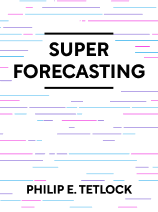

This article is an excerpt from the Shortform book guide to "Superforecasting" by Philip E. Tetlock. Shortform has the world's best summaries and analyses of books you should be reading.
Like this article? Sign up for a free trial here .
What is scope insensitivity? How does the failure to visualize large quantities affect charitable decision-making?
Scope insensitivity (also known as scope neglect) is a cognitive bias that occurs when a problem is sized up based on its mental image as opposed to its actual complexity or scope. The scope insensitivity bias is central to charitable decision-making as it affects how much people are willing to pay to help a cause.
Read on to learn about scope insensitivity and its implications for charitable decision-making.
What Is Scope Insensitivity?
Scope insensitivity is the tendency to respond to a situation based on our mental image of it rather than the actual scope of the problem. For example, one study asked people how much they would pay to prevent 2,000 birds from drowning in spilled oil. They asked a second group of people how much they’d pay to prevent 20,000 birds from drowning, and a third group was asked about 200,000 birds. But across all three groups, the average answer was roughly the same—about $80.
Logically, this doesn’t make sense: We should be willing to pay much more money to prevent the deaths of 200,000 animals than 2,000. But when asked this question, we don’t actually picture the exact number of birds. Instead, we instinctively picture the sad image of an oil-soaked bird that we’ve seen in news reports and dish soap commercials. Instead of basing our answer on the actual scope of the problem, we base it on how bad that image makes us feel. The image is the same no matter how many birds are involved, so our answer is the same too.
This is another form of cognitive bait-and-switch. The difficult question is “What is the objective monetary value of the damage caused by this problem?”—or in this case, “How much is the life of one bird worth?” But that’s difficult to answer, so we swap in an easier question: “How bad does the image of just one dying bird make me feel?”

———End of Preview———
Like what you just read? Read the rest of the world's best book summary and analysis of Philip E. Tetlock's "Superforecasting" at Shortform .
Here's what you'll find in our full Superforecasting summary :
- How to make predictions with greater accuracy
- The 7 traits of superforecasters
- How Black Swan events can challenge even the best forecasters






